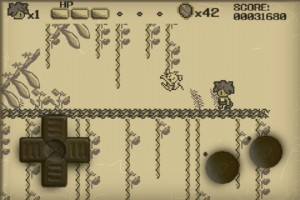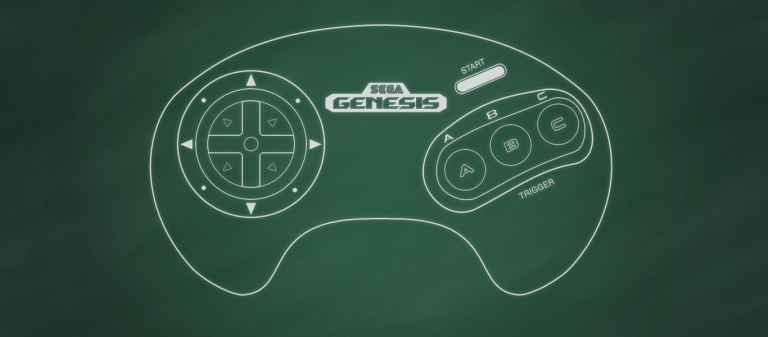 Lesson Four: A Little Variety Goes a Long Way
Lesson Four: A Little Variety Goes a Long Way
This idea underpins everything discussed before, but it’s worth noting additional ways these classics scored high on the depth meter. Each game in the Sonic the Hedgehog trilogy presented a super-challenging minigame that gave players a break from the usual side-scrolling action. Hard Corps inherited the Contra tradition of tossing in bike riding and hold-on-for-your-life flying stages that are just as critical to the formula as all the cool guns. According to fansite Streets of Rage Online, an extra mode planned for Streets of Rage 3 sadly received the axe before release — but the game made do with a harrowing bulldozer chase sequence.
It’s important for devs to keep their audiences in mind when deciding how wide to cast their game design net in a single title, of course. The additional modes in Sonic, Contra, and Streets of Rage all tested the player’s action skills, which is what they signed up for; a round of Sudoku or a math puzzle sitting smack dab in the middle might not have gone over quite as well.
 So What Holds Back iOS Action Games?
So What Holds Back iOS Action Games?
Let’s face it: all those awesome features were implemented by entire teams and companies that had some cash to burn. Nevertheless, other genres on iOS have managed to capture console-quality depth, and I’ve seen shoestring budget side-scrollers that could have done likewise if the dev had reached just a little further. It’s worth noting that there’s a love of all things 8-bit among the indie development community, so maybe reinterpreting the 16-bit era and its game design advances is just something that needs to be worked up to on a cultural level. Maybe the inclination is there but the desire for it is something the consumer base needs to work up to.
I would also agree with those who note user interface design as a critical barrier. We can certainly see it in beat ’em up ports by Bow Mobile and SEGA themselves, who’ve had to scramble to fix control issues post-release or let their multi-button titles sit on the App Store and weather storms of criticism. We’re left with quite the catch-22, aren’t we? Cash-strapped indies have much less luxury in the way of post-launch recoveries if they get adventurous with UI design, and yet every auto-scroller or game with no bells and whistles beyond right and left movement will blend into a sea of similar titles.
 But I would propose that none of the games I’ve mentioned relied on interfaces much more complex than the best iOS indies have churned out this year. GlitchSoft’s Star Marine is evidence enough that complex shoot ’em ups are well within reach. The Rotting Cartridge’s Kale in Dinoland is especially worth a good hard look if you’re just embarking on your own journey into the App Store. Kale’s interface is scarily close to an NES or Game Boy controller in terms of arrangement and reliability. It’s still one button shy of what’s needed for specials in Streets of Rage 3, to be sure, but look at what Kale has already gained with its four-way virtual D-Pad. The main character can target enemies above him and make his rides climb and descend. That’s more than we can say for most side-scrolling heroes on this platform!
But I would propose that none of the games I’ve mentioned relied on interfaces much more complex than the best iOS indies have churned out this year. GlitchSoft’s Star Marine is evidence enough that complex shoot ’em ups are well within reach. The Rotting Cartridge’s Kale in Dinoland is especially worth a good hard look if you’re just embarking on your own journey into the App Store. Kale’s interface is scarily close to an NES or Game Boy controller in terms of arrangement and reliability. It’s still one button shy of what’s needed for specials in Streets of Rage 3, to be sure, but look at what Kale has already gained with its four-way virtual D-Pad. The main character can target enemies above him and make his rides climb and descend. That’s more than we can say for most side-scrolling heroes on this platform!
If placed in a belt-scrolling environment, Kale could move up and down the field, execute aerial attacks mid-jump, and context would take care of grapples. Double-pressing in one direction to run or dash, plus a dash attack? Mm-hmm, yep, I see those there too. And who’s to say a tap at the screen couldn’t make little Kale pull off a somersault kick, while a swipe makes him launch a fireball? What strange and wonderful things the future may hold!
Want to chime in and tell me how I’m just a nostalgia-goggled old fogey and completely ignorant of the pressures of being an indie dev, or just want to share a memory of another game that really hit the mark way back when? It’s your turn to sound off in the comments section! And if you’d like to spout your own thoughts on the state of iOS gaming and want to use a feature iFanzine article as your sounding board, why, we can arrange that.
Unless otherwise noted in descriptions, all media in this editorial owes its existence to the fine contributors at the Videogame Museum.


